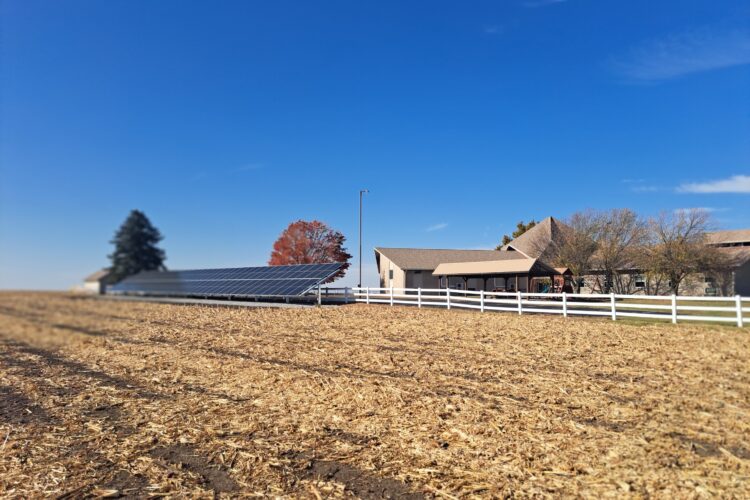Finding Your Family—In the Forest

BOOK REVIEW by Tom Small.
Suzanne Simard, in her first book, Finding the Mother Tree: Discovering the Wisdom of the Forest, has a story to tell. She tells it very well, with a keen sense of the dramatic. And she plays many roles. Foremost, she’s the mystery-story detective. She follows the clues, “step by step—puzzle by puzzle,” seeking the truth—slowly, painfully, “becoming a sleuth of what it takes to heal the natural world” (p. 3).
A pioneer in discovering the ways trees and other plants communicate with and aid one another, Simard also plays the role of Mother, with two intrepid daughters. Her ancestry and family include old-style lumbermen, tough farm women, and bull-riding cowboys. For all of them, the great cedar and fir forests of the Canadian Northwest “would always be our life’s blood” (38).
But the family is not complete until, at one of her story’s great climaxes, Suzanne, working for a large lumber corporation, makes an exhilarating series of discoveries. First, that different species—birch and fir—not only do not compete but adjust sensitively and intelligently to one another’s changing needs, trading photosynthetic carbon in a “sophisticated exchange pattern,” a kind of “reciprocal alchemy” (175-76). Far from being the “demon weed” of the forest industry, birch plays an essential role in the system by which forest regenerates itself (161).
Then, soon after, comes her climactic discovery. The elder trees are Mothers of the forest. To the young and the seedlings, the great Mothers pass both nourishment and information, their wisdom, both during their long lives and, especially, as they die. Suzanne, as a mother of two daughters, facing the strong possibility of death from metastasizing breast cancer, has discovered her counterpart in the forest. She realizes that “the link between generations, as with all living things, is the legacy of the forest, the root of our survival” (266).
As Simard solves one mystery after another, there slowly emerges yet another role she plays in the drama of fulfilling and redeeming her own family legacy. She becomes a magician, a magus—both enchanted and enchanter. She realizes she is “Passing the Wand” (title of her final chapter). But, as followers of Harry Potter know, the magic of the Elder wand is generated from Death, and only a person capable of facing death can be its master. Out of death comes the magical power of survival, of generation and regeneration. Magical circles: mother salmon who ensure survival of their young in their final dying return to home; mother bears who feed themselves and their young as well as feeding mother trees far inland from the rivers, with the flesh and bones of half-eaten salmon (289-93). Passing the Wand.
Simard leads us on a journey to the mysterious underworld, to trace the complex webs of roots and mycorrhizae connecting all the plants of the forest, in a “web of interdependence” (4). She returns from her perilous journey with a solution to the mystery and key to the future: “Turning to the intelligence of nature itself is the key” (305).
As she tells us, this is not a book about saving the trees, but about “how the trees might save us” (6). But only if we “heed the answers we’re being given” (294). By the trees themselves. We must begin by “recognizing that trees and plants have agency. They perceive, relate, and communicate . . . cooperate, make decisions, learn, and remember” (294).
The final story Simard tells is one she is “increasingly enchanted by,” told by Bruce “Subiyay” Miller of the Skokomish Nation. He tells basically the same story as Simard, but with an added dimension. Subiyay “talks of the trees as people. Not only with a sort of intelligence—akin to us humans—or even a spiritual quality perhaps not unlike ours. Not merely as equivalent to people, with the same bearings. They are People. The Tree People” (294).
Simard has spent “a lifetime as a forest detective” (5). All of her lives—as detective, Mother, magician—intertwine with the lives of the forest, the same ancient heritage. “I can’t tell if my blood is in the trees or if the trees are in my blood” (25). Can we learn from indigenous peoples how “all the plants in the forest belong to one another” (169)? Can we imagine the trees as kin? Can we participate in the ancient wisdom of the “Tree People”?
Simard leaves us with a final injunction: “Go find a tree—your tree. Imagine linking into her network connecting to other trees nearby. Open your senses” (305). Imagine how this deceptively simple course of action might ultimately change our perception of ourselves, our relationships, our behavior, and our sense—to borrow a phrase from Wordsworth—of “something far more deeply interfused.” Shall we begin?
Tom Small is a member of Kalamazoo Friends Meeting in Michigan and is co-author of the book Using Native Plants to Restore Community.
More by Tom Small: A Call for More Radical Witness

